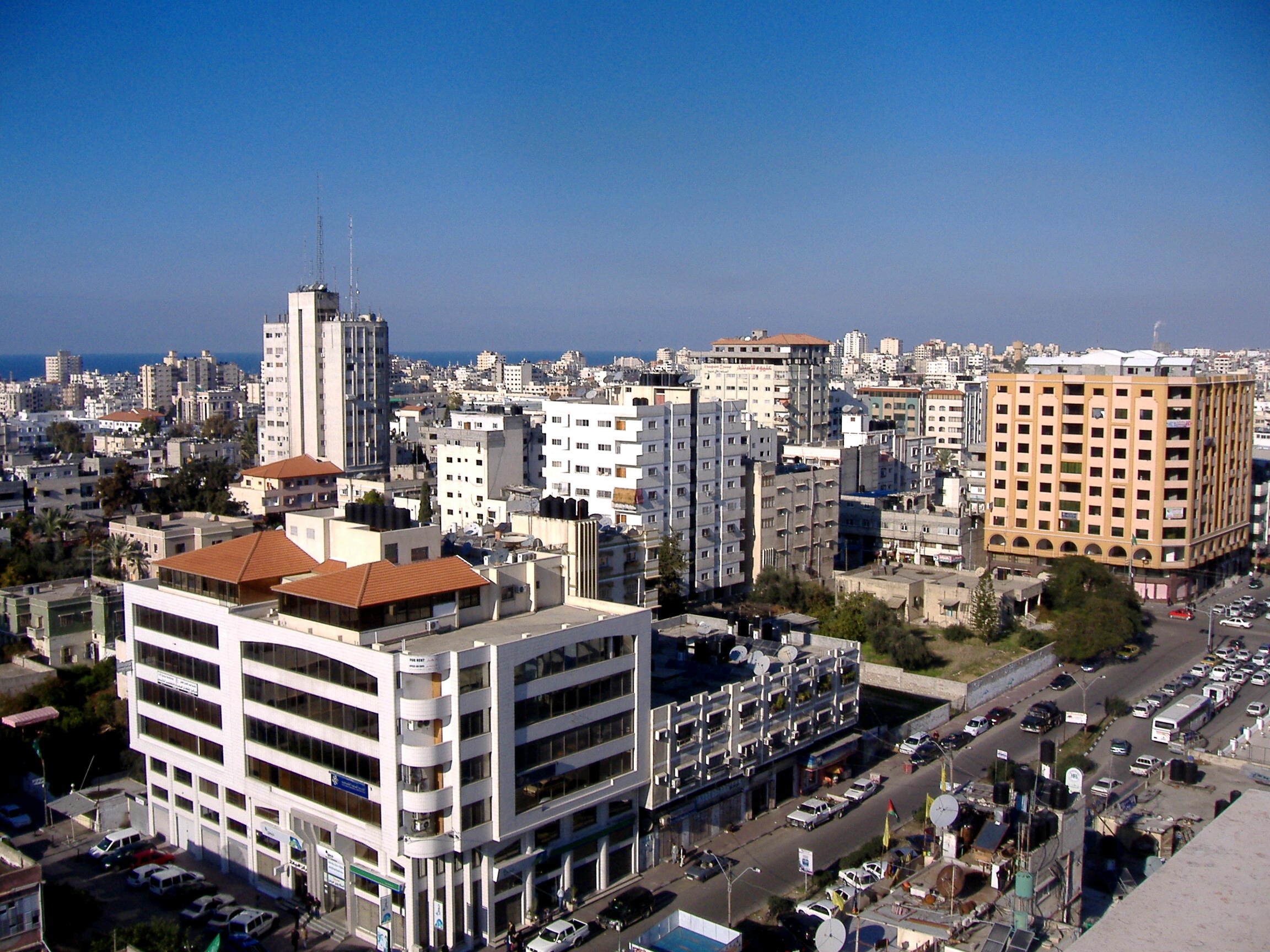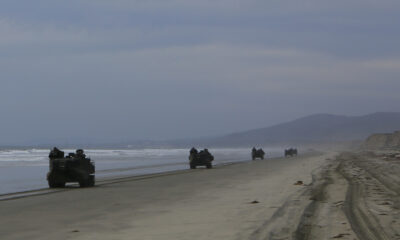Civilization
No Way To Avoid Fighting Hamas and No Other Way To Fight
HAMAS locates all its command and control amidst its civilian population. israel must fight HAMAS where they are.

“Hamas is deliberately hiding behind civilians,” says Israel. But people look at the horrible pictures coming from Gaza, and their heart refuses to be convinced – though nobody can seriously contest the fact that Hamas is operating among civilians. Why are civilian casualties so heavy? Some ask: Doesn’t every urban (and non-urban) guerilla group unavoidably operate among civilians, like Mao’s “fish that swims in the sea”? And, moreover, do not states also put military and strategic facilities in their cities, especially capitals? Aren’t there many “legitimate military targets,” starting with IDF headquarters, in Tel Aviv? What is the difference, except that the guerillas are much weaker?
In order to get some idea of what Israel is facing, it is important to realize that in this war, virtually 100% of the military targets of the enemy are in the very midst of civilian population. This is really unlike any other war, symmetrical or asymmetrical, because of the unique nature of the jihadi mini-state that Israel tolerated in Gaza for many years, in the vain hope of containing and deterring it, and aware of the tremendous human cost of dismantling it.
There is simply no such thing as a Hamas military unit or target that can be attacked outside the centers of civilian population. In a “normal” war, there are always plenty of such targets. The main military forces of the enemy, of all kinds, will usually be deployed outside population centers, while various other significant targets, including “dual purpose” ones such as communications and production centers, are indeed located among civilians and can only be attacked at the risk of “collateral damage.” But the first category, “purely” military targets, simply doesn’t exist in the case of Hamas in Gaza – uniquely so.
Take rocket fire as an example. Thousands of rockets have been fired on Israel, indiscriminately targeting population centers, since the Oct. 7 massacres; many thousands, increasingly powerful and long-range ones, had been fired since Israel’s withdrawal from Gaza in 2005, during the periodic rounds of fighting and between them, provoking those rounds. In traditional terms of guerilla warfare, this would be the equivalent of Viet Cong rockets falling on American cities; of course, apart from lacking the means to strike at American cities, Viet Cong was also not fighting in order to “liberate” America.
But if Hamas wanted to kill Israeli civilians while limiting the damage to Palestinian ones, they could have launched these rockets only from the less-populated rural areas outside the city of Gaza and the other main populated localities, using, as cover, the tunnels in which the launchers are usually stored, from which they emerge, and where they return after firing. Thus, limiting the launching of rockets to those relatively open spaces – for the Gaza Strip as a whole is a small and densely populated territory – is militarily feasible. Instead, rockets are fired from all over the Gaza Strip including, regularly, from the midst of the most populated neighborhoods. There is no way to attack those launching sites for any length of time without killing civilians, and many of them.
It is well documented that Hamas fires rockets not just from populated centers, but often from near the most sensitive facilities, including hospitals, mosques, and schools (often crowded with people seeking shelter). And we are talking here about actual sources of fire, that if you do not attack immediately, there will be a rocket falling on an Israeli city in a minute. If the Iron Dome knocks down 90% out of thousands, hundreds will still get through. Notoriously, Hamas’ main military infrastructure is the “metro” under Gaza City and the tunnels under other populated areas.
Senior Hamas leader Moussa Abu Marzouk explained their purpose candidly in a recent interview: The tunnels were built for the fighters; we do not allow civilians to take shelter there; the civilians’ security is the responsibility of the UN and of Israel as “occupying power.” Given all this, the usual saying – yes, Israel has a right to defend itself, but don’t kill civilians – is simply meaningless. These are empty words. There is no way to fight Hamas without killing a lot of civilians, and no way to seize this area in order to put an end to this jihadi state without killing great numbers of civilians (despite persistent IDF efforts to get civilians out of the zone of fighting) and causing horrendous destruction. For all its military power, Israel is powerless to fight Hamas in any other way.
Thus, Hamas in Gaza is unlike any army, but it is also unlike any urban or non-urban guerilla force, because in Gaza it has been, since its coup in 2007, a de-facto government of a jihadi city-state. Urban guerillas or terrorists are indeed operating from among civilians and have no other choice, but they don’t have strategic assault weapons; they don’t have rockets that can target the population centers of the enemy. In every way, they are much weaker and much less entrenched, because they are underground fighters and not a government controlling a territory for many years and massively supported from outside.
In the U.S., comparisons are now made with cities in Iraq, like Fallujah and Mosul, that had been taken over by guerillas and had to be retaken by street fighting, at an enormous human cost (with hints and more than hints that the IDF is now causing greater collateral damage than the U.S. military did then). But even here the analogy is very partial. The guerillas had then been in control in those cities for much shorter periods of time, and they were, during that time, (relatively) isolated. They had neither the time nor the resources to entrench themselves there, above and under the ground, to anything like a similar degree. This is more like the ISIS Islamic state that would have been allowed to survive and gather strength for many years. But since their concept was to control a large (preferably expanding) territory, they would have had to put a large part of their forces in the field outside of population centers, exposing them to attack.
One should rather imagine a Mosul or a Fallujah with a compact area around it as a jihadi city-state with more than two million people under its sway, allowed to entrench itself for many years. Imagine such a state supplied with money, weapons, and training by Iran and fed by huge flows of Qatari money. Imagine it boosted also by billions in humanitarian aid, plundered by the terrorist government at will, contributed to by the international community, with huge amounts of cement “for housing” allowed by the Iraqi government through its de-facto border, with such a state diverted for the building of underground terrorist tunnels – as Israel had to allow while being accused of “cruel siege.” Imagine what it would have taken to capture such a fortress.
There is another model of partisan armies that operate in, and sometimes de facto control whole chunks of, areas covered by forests, jungles, or mountains. These, again, must be spread over large areas and move from place to place, thus exposing themselves, on many occasions, to “pure” battlefield situations outside of populated localities. And when such forces are attacked inside those localities (with different levels of brutality on the part of the counter-insurgency forces that will sometimes target these localities directly), these are, after all, usually small rural communities rather than densely populated urban centers.
Thus the long-entrenched jihadi city-state in Gaza, heavily sponsored from outside, attacking its neighbor with rockets at will, and protected for years against a real siege by modern humanitarian norms, is, as far as I can recall, literally like nothing else in history. The closest analogy is its northern counterpart Hezbollah, with a much larger and much more powerful arsenal of rockets, which largely (though not wholly) controls Lebanon, but displays a greater sense of responsibility for the fate of the Shia Lebanese population and has until now avoided an all-out war. The Hamas mini-state must not be allowed to survive this round and immediately start planning the next assault, fully secure in the knowledge that nothing they will ever do to Israel will allow us to do the only thing they really fear – dismantle this state.
This article was originally published by RealClearPolitics and made available via RealClearWire.
Professor Alexander Yakobson is a Research Fellow of the Kogod Research Center at the Shalom Hartman Institute and Associate Professor of Ancient History at the Hebrew University and a scholar of democracy, popular politics, public opinion and elections in the ancient world.
Prof. Yakobson holds a Master’s Degree and a Doctorate in ancient history from the Hebrew University of Jerusalem and previously taught at the University of Haifa.
In 1999, he published Elections and Electioneering in Rome: a Study in the Political System of the Late Republic. In addition to his focus on the ancient world, Prof. Yakobson researches the themes of democracy, national identity, nation-states, and the rights of national minorities in Israel and Western democracies. He co-authored a book on these subjects with Amnon Rubinstein: Israel and the Family of Nations: the Jewish Nation-State and Human Rights (published in Hebrew, 2003 and English, 2008).
-

 Education3 days ago
Education3 days agoCHAPTER 13: Fomenting Race Wars Begins in Kindergarten
Space Is No Longer the Final Frontier—Reality Is [forthcoming release May 2024] -

 Executive2 days ago
Executive2 days agoCHAPTER 14: Changing Hearts and Minds
Space Is No Longer the Final Frontier—Reality Is [forthcoming release May 2024] -

 Guest Columns2 days ago
Guest Columns2 days agoWhen Artificial Intelligence Tells You What A “Useful Idiot” In The Mainstream Media Cannot — The Truth
-

 Civilization5 days ago
Civilization5 days agoAntisemitism – and misguided legislation
-

 Executive2 days ago
Executive2 days agoTrump is not a paranoiac after all
-

 Executive4 days ago
Executive4 days agoCensorship Industrial Complex redux
-

 Guest Columns5 days ago
Guest Columns5 days agoGOP Right Flank Challenges Speaker Johnson (and Trump)
-

 Executive4 days ago
Executive4 days agoDon’t Let Colorado Become the Next Energy Crisis State













Remember, HAMAS is following Islam law and doing what Mohammad instructed Islam citizens to do. Learn Islam’s real history and read the Qur’an.